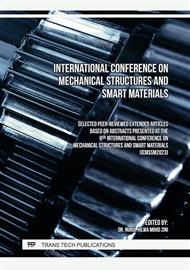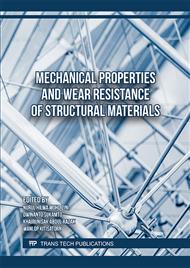p.3
p.9
p.17
p.23
p.29
p.35
p.41
p.47
The Role of Thin Plies in Traditional Composite Structures Under Different Loading Conditions
Abstract:
In the current paper, composites with both thin and thick plies are designed to meet specific criteria and tested under both in plane and out of plan critical loading conditions. The tests adopted are bolted joint, drop-weight impact, compression after impact, Charpy impact, bending, and bending after thermal aging. The results of the proposed design are compared with that of the traditional composites and show higher improvement in most of the load cases by using thin plies inside the lamination process with the traditional ones. The results showed that the two proposed alternatives with thin plies are of higher advantage for the bolted joints problem. On the other hand, the alternative with thin plies distributes to be surrounding each traditional ply is of high advantages for both the impact and the bending problems. The alternative with a core of thin plies at the middle of the laminate is of high advantage for the compression after impact.
Info:
Periodical:
Pages:
23-28
Citation:
Online since:
October 2023
Authors:
Keywords:
Price:
Сopyright:
© 2023 Trans Tech Publications Ltd. All Rights Reserved
Share:
Citation:



